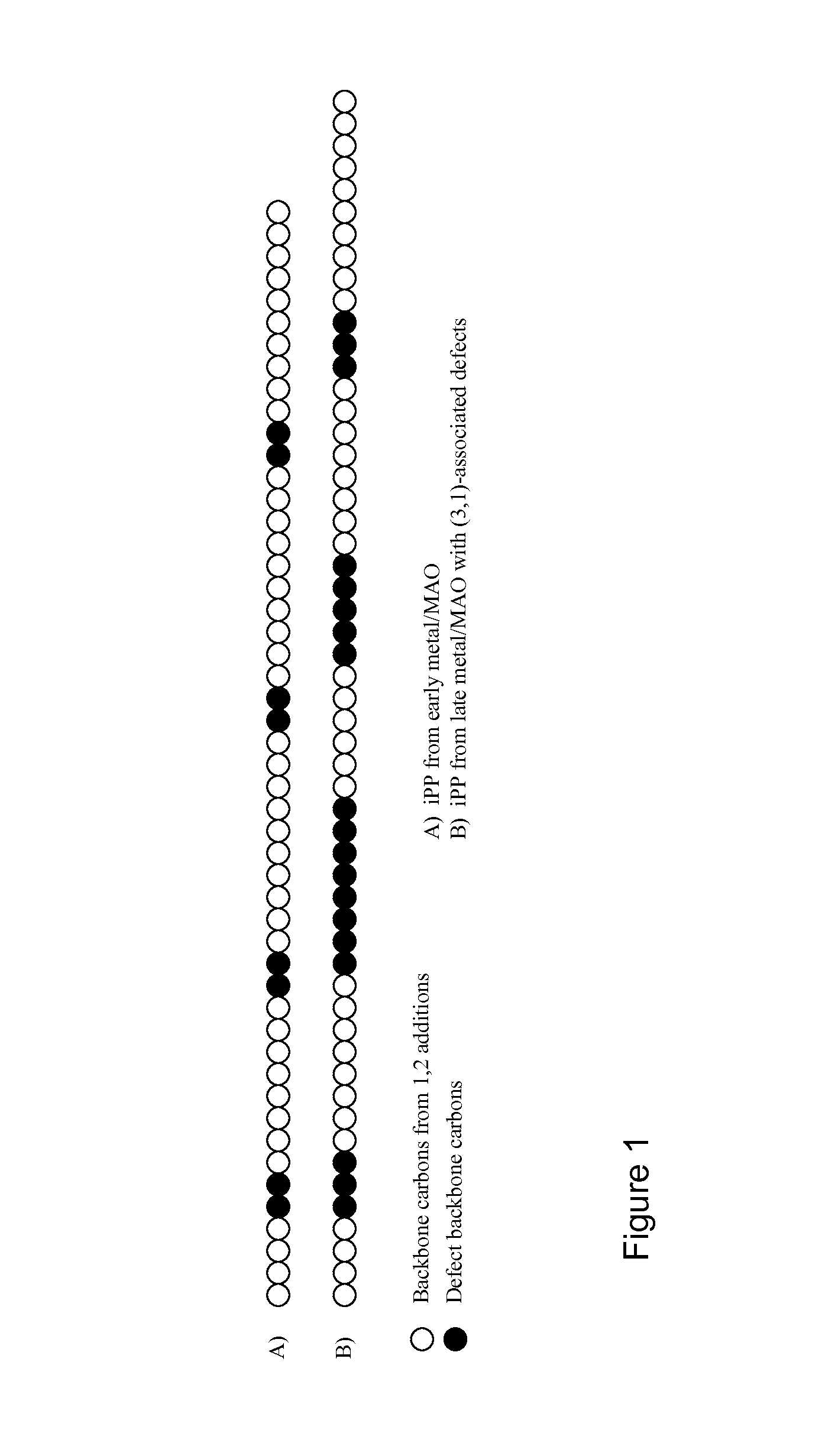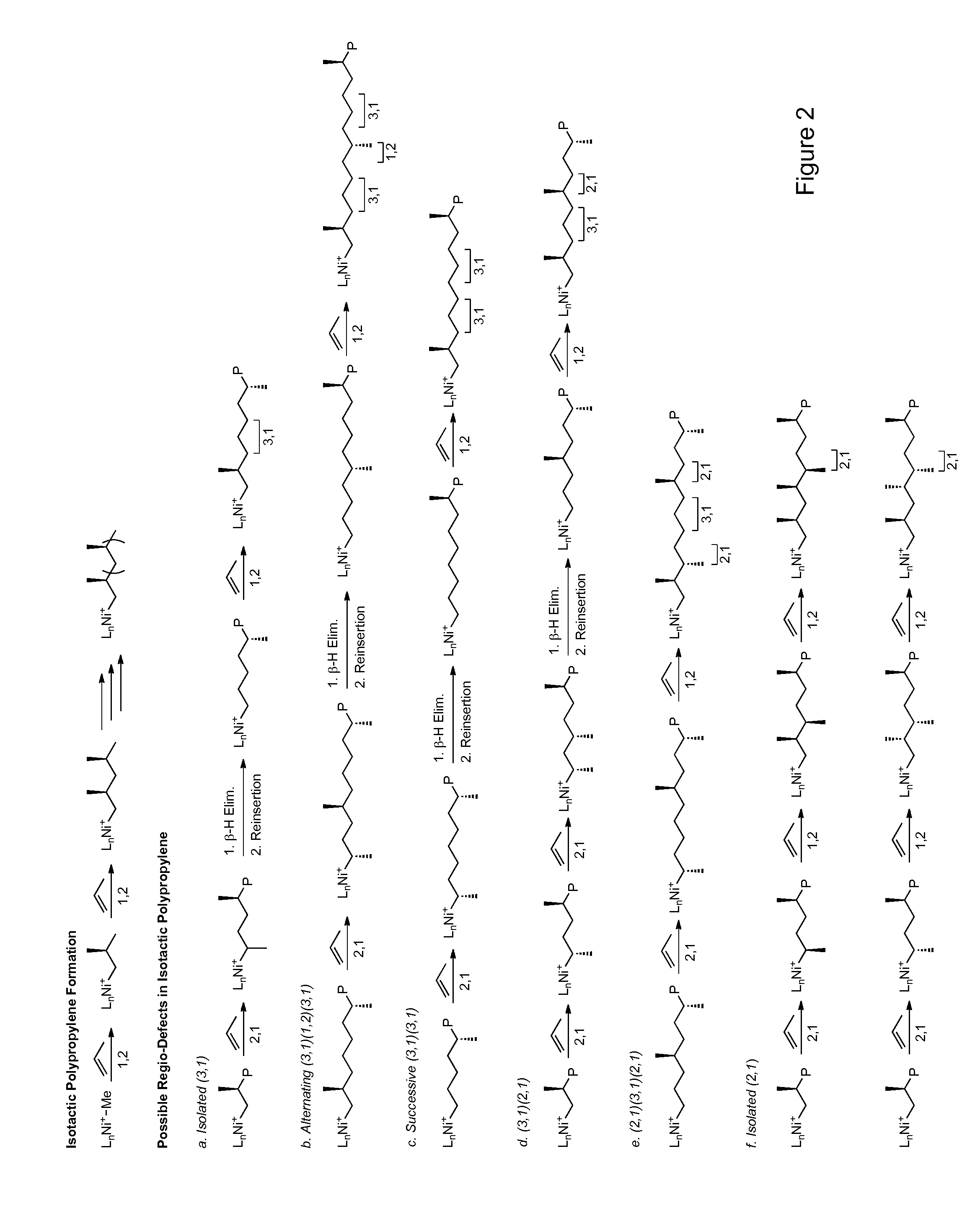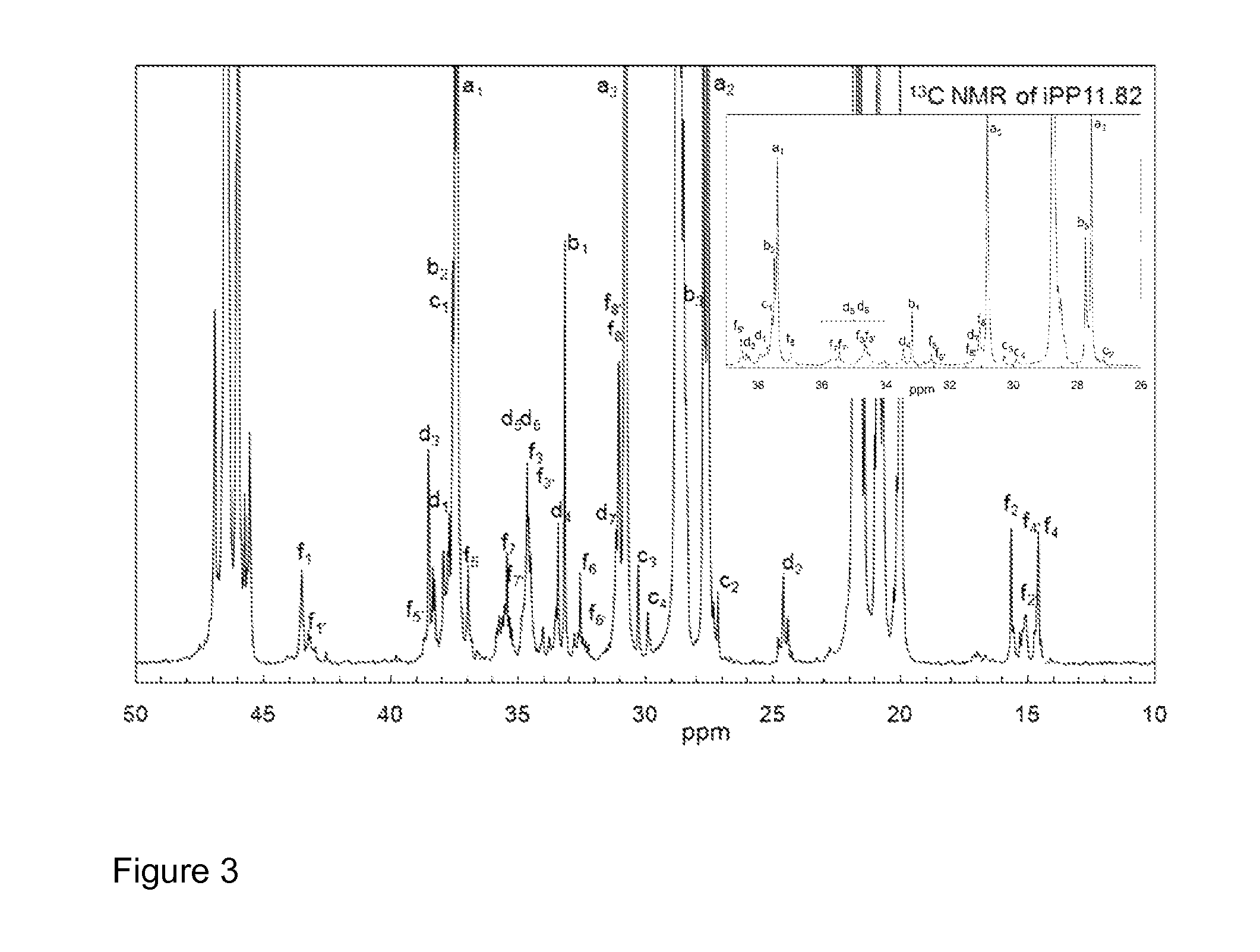Polyolefins having reduced crystallinity
a technology of polyolefins and crystallinity, applied in the field of polyolefins having reduced crystallinity, can solve the problems of limiting the crystallinity of polymers, bulky defects, and different defects in the polymer molecules that are produced by the chain walking effect, and achieve the effect of reducing the crystallinity level and reducing the level of crystallinity
- Summary
- Abstract
- Description
- Claims
- Application Information
AI Technical Summary
Benefits of technology
Problems solved by technology
Method used
Image
Examples
example i
ylene) Synthesis
[0056]The diimine-based catalysts used to make the two series of poly(propylenes) analyzed, rac 1 and rac 4.
[0057]
Example II—Propylene Polymerization, FIG. 6, Entry 6-10
[0058]In a glovebox, a 6 ounce (180 mL) round-bottom Laboratory Crest reaction vessel (Andrews Glass) was charged with toluene (25 mL) and a solution of MMAO-7 (2.4 mL, 4.6 mmol). The solution was cooled to −78° C. and the appropriate mass of propylene was condensed into the vessel. The reaction mixture was then allowed to equilibrate to the desired temperature. After 10 minutes, the complex (17 μmol) was injected as a solution in 2 mL of dry, degassed CH2Cl2. The polymerization was quenched with methanol (10 mL). The reaction mixture was then precipitated into copious acidic methanol (5% HCl(aq)) and the resulting suspension stirred overnight. The polymer was isolated, dissolved in hot toluene, filtered over celite / silica / alumina, precipitated with methanol, isolated again and dried to constant weigh...
PUM
| Property | Measurement | Unit |
|---|---|---|
| molecular weight | aaaaa | aaaaa |
| molecular weight | aaaaa | aaaaa |
| polydispersity | aaaaa | aaaaa |
Abstract
Description
Claims
Application Information
 Login to View More
Login to View More - R&D
- Intellectual Property
- Life Sciences
- Materials
- Tech Scout
- Unparalleled Data Quality
- Higher Quality Content
- 60% Fewer Hallucinations
Browse by: Latest US Patents, China's latest patents, Technical Efficacy Thesaurus, Application Domain, Technology Topic, Popular Technical Reports.
© 2025 PatSnap. All rights reserved.Legal|Privacy policy|Modern Slavery Act Transparency Statement|Sitemap|About US| Contact US: help@patsnap.com



